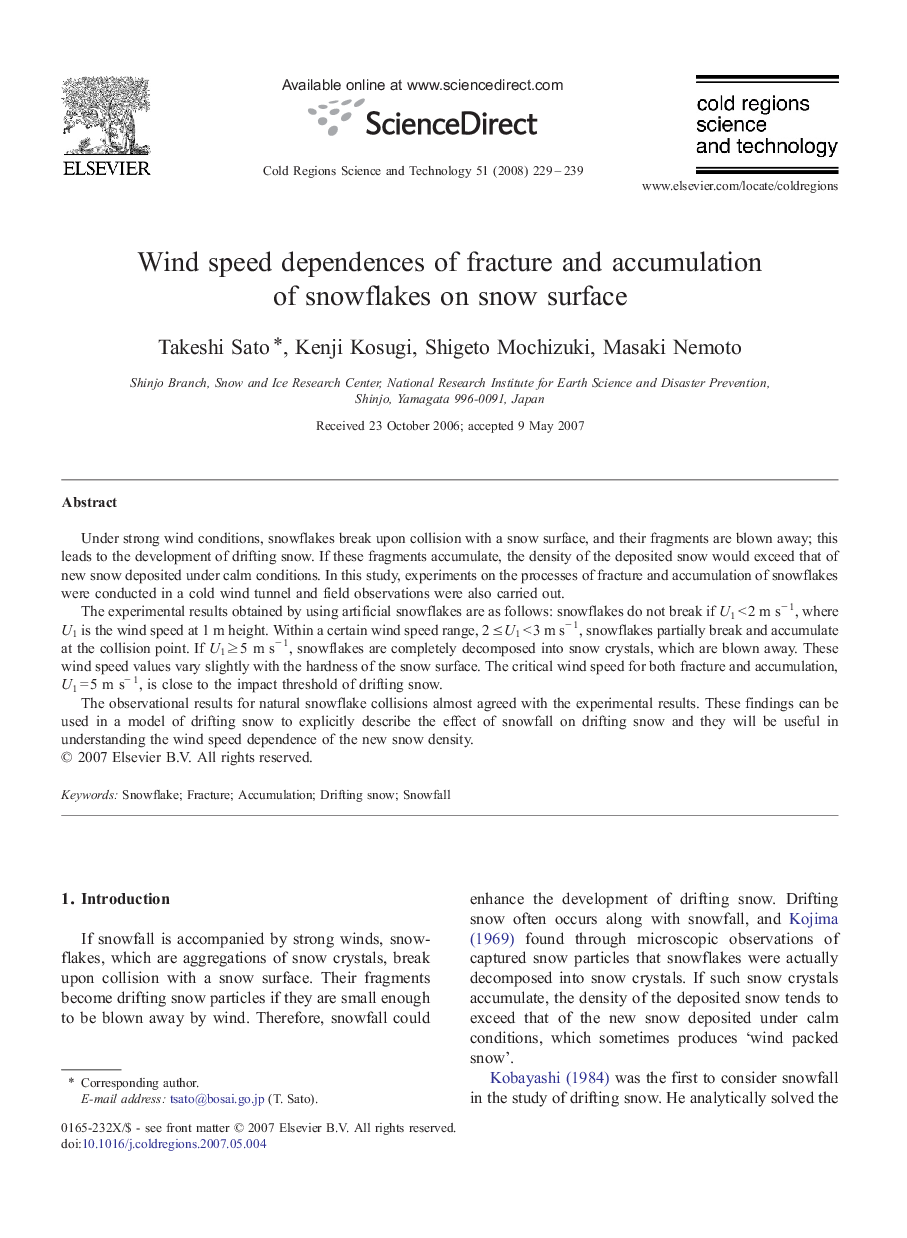| Article ID | Journal | Published Year | Pages | File Type |
|---|---|---|---|---|
| 4676575 | Cold Regions Science and Technology | 2008 | 11 Pages |
Under strong wind conditions, snowflakes break upon collision with a snow surface, and their fragments are blown away; this leads to the development of drifting snow. If these fragments accumulate, the density of the deposited snow would exceed that of new snow deposited under calm conditions. In this study, experiments on the processes of fracture and accumulation of snowflakes were conducted in a cold wind tunnel and field observations were also carried out.The experimental results obtained by using artificial snowflakes are as follows: snowflakes do not break if U1 < 2 m s− 1, where U1 is the wind speed at 1 m height. Within a certain wind speed range, 2 ≤ U1 < 3 m s− 1, snowflakes partially break and accumulate at the collision point. If U1 ≥ 5 m s− 1, snowflakes are completely decomposed into snow crystals, which are blown away. These wind speed values vary slightly with the hardness of the snow surface. The critical wind speed for both fracture and accumulation, U1 = 5 m s− 1, is close to the impact threshold of drifting snow.The observational results for natural snowflake collisions almost agreed with the experimental results. These findings can be used in a model of drifting snow to explicitly describe the effect of snowfall on drifting snow and they will be useful in understanding the wind speed dependence of the new snow density.
